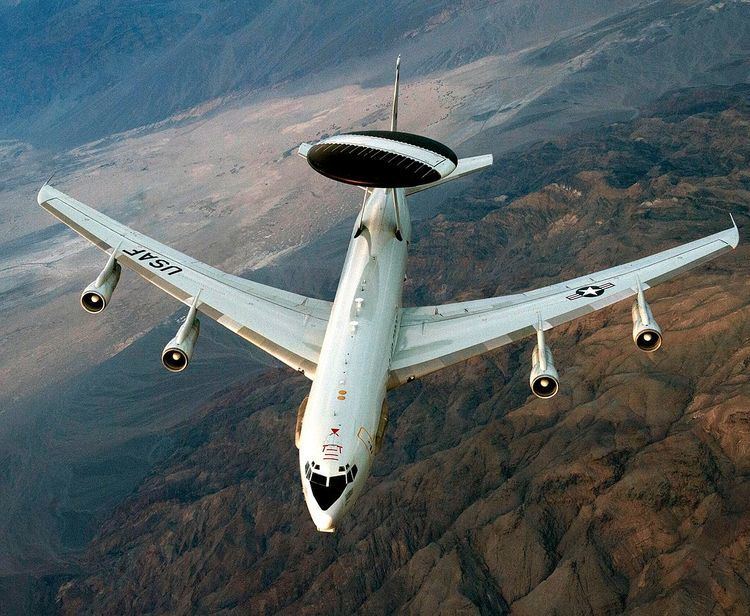Active 1942–Present Type Squadron | ||
 | ||
Role Advanced Command and Control Training | ||
The 8th Weapons Squadron is a non-flying United States Air Force unit, assigned to the USAF Weapons School at Nellis AFB, Nevada.
Contents
The squadron inherited the lineage of the 8th Airborne Command and Control Squadron. The 8th’s history includes flying cargo aircraft to supply people and munitions around the South Pacific during WWII. Known then as the 8th Combat Cargo Squadron, the unit’s C-46s and C-47s likely shared “ramp space” with the 433rd Fighter Squadron’s (now the F-15C Weapons Squadron) P-38s in New Guinea and the Philippines in 1944 and 1945. The 8th Airborne Command and Control Squadron flew the EC-135 to provide airborne command and control for deploying fighter squadrons over the Atlantic Ocean, and supporting the movement of key Air Combat Command leadership.
Overview
Provides advanced training for Airborne Warning and Control System and Ground Theater Air Control System officers. Also includes training to weapons officers for the E-3 Airborne Warning and Control System (AWACS), Command and Reporting Center (CRC), RC-135 Rivet Joint, EC-130H Compass Call and the E-8 Joint Surveillance Target Attack Radar System (JSTARS) communities.
World War II
Ferried aircraft to combat theaters and to Brazil from the Southeast United States under the lend-lease program using the Air Transport Command South Atlantic air ferry route, Mar 1942-Mar 1944.
Aerial transportation in Southwestern and Western Pacific, Nov 1944-Sep 1945 as a Combat Cargo Squadron, operating under Fifth Air Force. Operated from Biak to fly passengers and cargo to US bases in Australia, New Guinea, the Admiralties, and the Philippines. Also dropped supplies to US and guerrilla forces in the Philippines. Moved to Leyte in May 1945. Maintained flights to bases in Australia, New Guinea, and the Philippines; transported personnel and supplies to the Ryukyus, and evacuated casualties on return flights. Transported personnel and equipment of the occupation forces to Japan and ferried liberated prisoners of war to the Philippines. Moved to Japan in September 1945 where it operated until being inactivated in January 1946.
Cold War
Reactivated under Caribbean Air Command in 1949. Operated cargo flights from Albrook AFB providing logistical and supply support to installations in Panama and Latin America, Oct 1949-Feb 1952.
Reactivated in 1972 as EC-121 Airborne command post for tactical deployments worldwide, Feb 1972-May 1996. Has been involved in every United States combat operation since the Vietnam War. Deployed personnel and equipment to Spain and airfield personnel and equipment into Saudi Arabia, Aug 1990-c. Mar 1991 as part of Operation Desert Shield/Desert Storm.
Modern era
Its current squadron was formed in 1978, when the concept of Air Weapons Controller was added to the established concept of Fighter Weapons. The first Air Weapons Controllers graduated in December 1984 to become Fighter Weapons School instructors. Instruction at the 8th Weapons Squadron continues to this very day in the fields of United States Air Force tactical air control system (TACS), Air Battle Management (ABM), Electronic Warfare Support (ES), Electronic attack (EA) and their integration in operations. The course has graduated over 350 instructors who have been key to every conflict and contingency since 1985.
